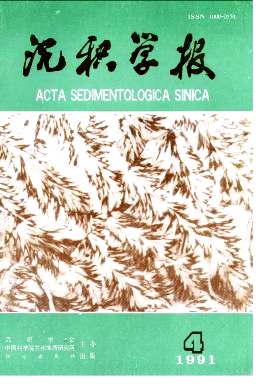Biomarker Assemblage and Study on Sedimentary Environments of Member 2 of Funing Formation, Lower Tertiary, Jinhu Sag, Subei Basin
- Received Date: 1989-07-31
- Publish Date: 1991-12-10
Abstract: The features of bipmarker assemblage in the saturate and aromatic fractions of source rocks from Member 2 of Funing formation, Lower Tertiary, Jinhu, Subei Basin have been systematically studied, and the obvious differences in biomarker components are indicated which would clearly show the changes of sedimentary environments during their deposition. Based on n-alkane distribution and biomarker assemblage, source rocks from Member 2 of Funing Formation may be devided into two types: One is characteristic of even carbon predominance in n-alkane distribution with a very sttong phytane preference. The content ofβ-carotane preserved and formed under reducing conditions is high, gammacerane usually indicating a hypersaline environment is enriched, and dehydroxytocopherol, rellection the paleaosalinity of sedimentary basin has been identified in the aromatic fraction sf the same source rocks, all of them show that these source rocks may be reffered to a strong reduced, brackish deposit, implying a salinized period during the lake lifetime. Another is of odd carbon predominance in n-alkane distribution, its phytane preference relatively less. the abundances of β-carotane and gammacerane is much lower, and dehydroxytopcopherol is not detected. Therefore, it is characterised by normal lacustrine deposits and formed during a freshening period.
| Citation: | Bao Jianping, Wang Tieguan, Gan Yinu. Biomarker Assemblage and Study on Sedimentary Environments of Member 2 of Funing Formation, Lower Tertiary, Jinhu Sag, Subei Basin[J]. Acta Sedimentologica Sinica, 1991, 9(4): 136-142. |






 DownLoad:
DownLoad: